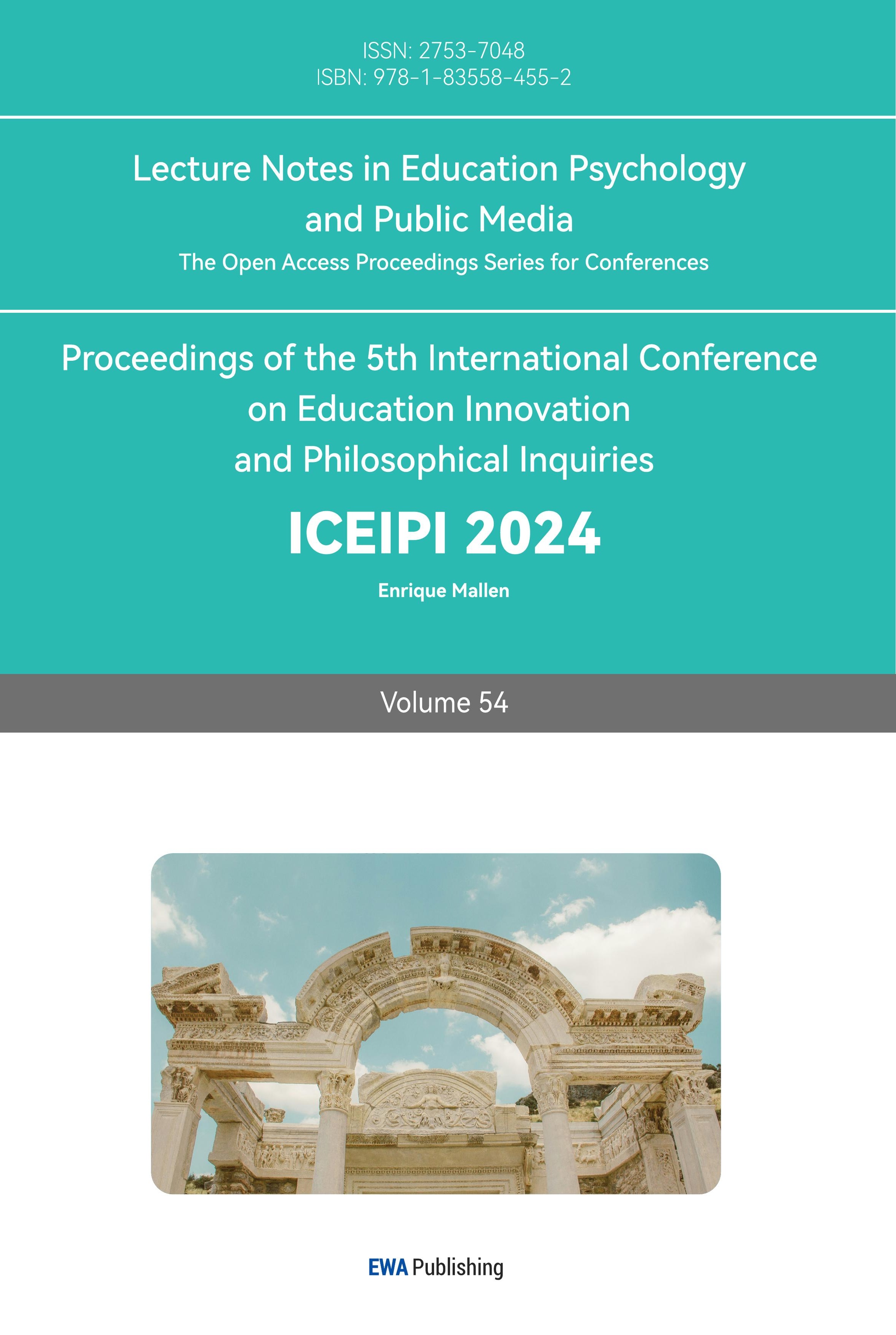1. Introduction
The recent PISA 2022 testing, the eighth cycle, offers extensive data on student proficiency in these areas, alongside insights into gender disparities and socio-economic influences [1]. While reading proficiency is a smaller aspect of PISA compared to other subjects, it still provides valuable insights for educators and policymakers seeking to improve students' reading abilities [2]. Furthermore, the present research has emphasized the influence of school environments on student achievement, with studies demonstrating that a prejudiced atmosphere in schools might affect students' proficiency in mathematics and reading.
Comparisons of student performance on a global scale show notable differences between countries, highlighting the importance of customized interventions to tackle difficulties and foster academic excellence [3]. Student accomplishment is still influenced by factors such as socio-economic background and gender inequalities, highlighting the need for specific support mechanisms in education systems [4].
This study seeks to examine the variations in student reading performance among different nations, considering the importance of PISA tests in shaping education policies and practices [5]. This research aims to investigate the underlying elements that cause the differences in students' reading performance worldwide by utilizing the extensive dataset of PISA 2022. This study seeks to offer significant insights to policymakers and educators by doing a thorough analysis of the data. The goal is to improve educational outcomes and narrow performance gaps.
In the following sections, this paper will explore a thorough literature review, methodology, findings, and discussions to provide insight into the complex dynamics of student reading performance worldwide. This research aims to contribute to the ongoing discourse regarding educational reform and the enhancement of students' reading proficiency by examining the diverse factors that impact reading literacy.
2. PISA 2022 Data Analysis
The PISA 2022 dataset is a comprehensive and valuable resource for scholars to analyze and compare the reading abilities of students from different countries. Analysis of data from different nations allows for the acquisition of useful insights into the factors that impact students' reading scores. This analysis also enables the identification of trends and patterns that lead to variations in performance.
According to the result of PISA 2022, several nations have been selected for analysis in the present study. Examples of industrialized nations are Finland, Singapore, and Canada, whereas rising countries include Indonesia, Brazil, and Mongolia. This study mainly compares data from six countries in four aspects: overall student reading performance, student attendance rates, solid foundations, and education system policies (As shown in Figures 1 to 4). Student reading performance is influenced by more than one factor [6,7]. Based on the disparities depicted in the figures downloaded it is evident that issues arise in several specific areas.
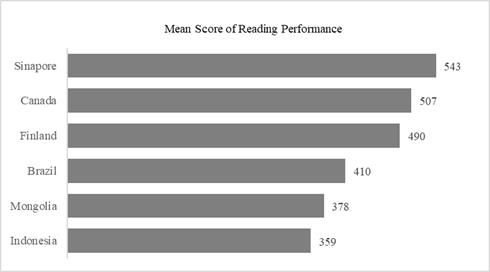
Figure 1: Rank of Reading Performance at National Levels [6,7].
This Figure shows average student reading performance scores across six countries. An important observation from the PISA 2022 assessment is the notable variation in student reading proficiency across different nations. These variances emphasize the influence of various socio-economic and cultural elements on the academic accomplishments of students [8]. As depicted in Figure 1, there exists a direct relationship between a nation's level of economic development and the availability of educational resources, alongside the reading proficiency of its students. Conversely, nations grappling with socioeconomic challenges tend to exhibit lower reading scores among their student population [9,10].
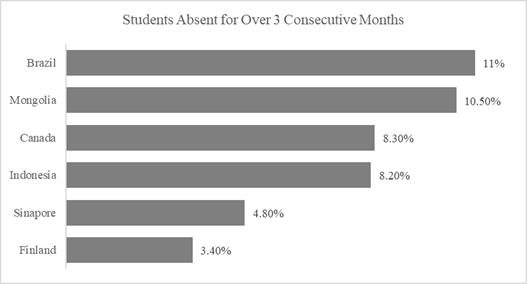
Figure 2: Percentage of Students Absent for Over 3 Consecutive Months [6,7].
Figure 2 depicts the percentage of students with consecutive absences exceeding 3 months. A higher value indicates a more severe absenteeism situation, as depicted here in Brazil.
At the individual level, both mental and socio-emotional skills have a substantial impact on the development of students' reading ability [11]. Although proficient reading requires cognitive skills such as phonemic awareness, vocabulary understanding, and reading comprehension strategies, the reading performance of kids is also influenced by their motivation, engagement, and self-regulation. For example, pupils who have an inherent motivation to read are more likely to exhibit greater reading competency in comparison to those who lack interest in reading [12]. This phenomenon is reflected in Figure 2, that is, children who are more self-disciplined and less prone to skipping classes have better reading performance.
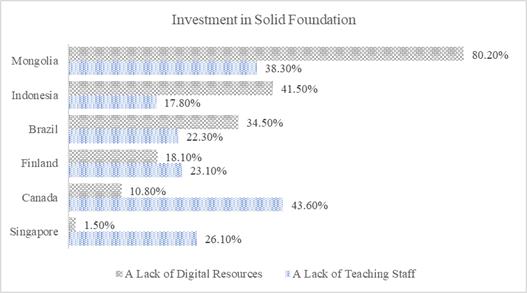
Figure 3: Proportion of Funding Allocated to Building a Strong Educational Base [6,7].
The data here pertains to investment in a solid foundation for learning, specifically addressing a lack of digital resources and a lack of teaching staff. Similarly, higher values indicate a more severe shortage of resources, as exemplified in Mongolia.
Students' reading performance is also affected by the school environment and teaching methods. Variables such as the caliber of teaching, accessibility of reading resources, and encouraging school environment influence pupils' reading proficiency. Differences in the data indicate that a school's investment in physical facilities affects students' reading scores. Schools that are more successful in popularizing digital resources and more equipped with teachers will have better students' reading performance.
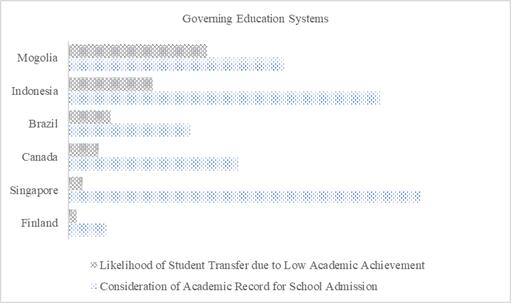
Figure 4: Percentage of Students Influenced by Policies [6,7].
Finally, the data pertains to the impact of policies on students. It mainly illustrates two aspects: firstly, the proportion of students who are required to transfer schools due to low academic performance, and secondly, the proportion of students whose grades are taken into consideration during the admission process.
The examination of worldwide patterns in student reading proficiency underscores the significance of education systems in cultivating literacy abilities and advancing equal opportunities for every student. Countries that possess highly developed education systems and employ effective teaching approaches typically exhibit kids with elevated levels of reading competence; conversely, nations lacking sufficient educational resources and support systems may encounter difficulties in enhancing pupils' reading proficiency [13]. As shown in Table 4, if the education system is too rigid in assessing and improving students' abilities through test scores, students' reading performance will be worse.
3. Discussion
3.1. Socioeconomic Status
Disparities exist in the availability of educational resources and assistance for pupils belonging to various socioeconomic groups [14]. Kids from underprivileged families frequently have difficulties in obtaining high-quality educational materials, such as literature, technology, and academic support, which can have a substantial influence on their reading proficiency.
Students in impoverished regions struggle to meet their basic needs for food and clothes, let alone achieve spiritual fulfillment. This issue is especially evident in nations with significant financial disparity, since kids from lower-income households may not have equal access to academic enrichment options compared to their wealthier classmates. Hence, the socioeconomic status of kids significantly impacts their reading performance.
In light of this situation, it is imperative to make concerted efforts to eradicate the negative impact of socioeconomic position on students' reading achievement. Policymakers and educational institutions must implement measures to guarantee that every student has equitable access to top-notch educational materials and assistance, to provide fairer circumstances for their reading performance.
3.2. School Teaching
The caliber of instruction and pedagogical methods employed in schools also present obstacles to pupils' reading proficiency. In many nations, particularly in isolated or impoverished regions, a dearth of competent educators leads to pupils experiencing a deficiency in effective mentorship and assistance. Students in this scenario may encounter obstacles in their growth that hinder their reading proficiency.
Furthermore, language hurdles might hinder teachers from effectively conveying knowledge to pupils due to their struggle to comprehend certain literary materials. Obsolete instructional techniques and educational materials may also be incongruous with contemporary studies on reading competence, hence exacerbating the negative effects on students' reading abilities.
To tackle these concerns, it is imperative to allocate resources toward enhancing teacher training programs, therefore elevating their instructional standards and proficiency. Simultaneously, curriculum reform is implemented to guarantee that the course content aligns with the most up-to-date studies on the development of reading ability. Above all, legislation must ensure equitable access to top-notch education for all children, regardless of their circumstances.
3.3. Families
When a student's family provides support and actively participates in their education, it leads to enhanced reading skills [15]. Students' reading scores can be influenced by their parents' educational views, parents' reading habits, and their linguistic competency. Reading holds great significance in certain cultures, motivating pupils to actively participate in more frequent and in-depth reading exercises. Conversely, cultural attitudes that favor abilities other than reading may result in poorer reading results.
An affirming reading setting that places importance on and motivates reading plays a crucial part in cultivating pupils' reading habits and abilities [16]. Parents who actively engage in their children's learning, provide a nurturing home atmosphere for reading, and highlight the significance of education, typically have children who develop more proficiency in reading. The reading performance of students can be influenced by both the educational level of their parents and their parents' attitudes towards reading. Nevertheless, in many nations, the failure to prioritize the establishment of such a culture has led to kids exhibiting indifference or apathy toward reading. This subsequently impedes their reading proficiency and overall scholastic success.
Various options exist to address the influence of family on student reading performance. Initially, offer parental instruction to ensure they comprehend their crucial position in fostering their children's reading advancement and supply assistance and direction. Furthermore, it is essential to develop a nurturing reading environment, promote parental involvement in reading activities, and foster a family culture that is conducive to reading. Furthermore, assists parents in rationally organizing family time and integrating reading into their everyday routine. It is crucial to enhance the significance of reading in communities and families by implementing educational initiatives and providing parent training. Parent support services are offered to give parents with reading assistance and tools to assist them in resolving any confusion or issues they may have in their child's reading education. These efforts aim to assist families in enhancing their involvement and support in their children's reading progress, resulting in improved reading performance and overall academic success for pupils.
3.4. Education Systems
Students' reading ability is often overly dependent on test scores in some education systems currently. However, reading ability should not be assessed solely through examinations, nor should it be the sole criterion for students' school selection. Given that reading is the cornerstone of learning and the basis for all examinations, the education system urgently needs to further develop and build a more advanced and comprehensive evaluation mechanism.
First, schools should recognize the importance of reading abilities. Reading is the foundation of learning and an essential skill for acquiring knowledge and mastering skills. Strong reading skills not only contribute to academic success but also enhance students' social adaptability and creativity. Therefore, evaluating students' reading ability should not solely hinge on exam scores but should employ a more holistic assessment approach.
Secondly, the education system needs to give more attention and support to reading skills. Educational institutions should provide students with rich and diverse reading resources and opportunities to encourage them to read actively and develop good reading habits. Additionally, diverse assessment methods, such as reading logs, book reviews, and oral presentations, should be adopted to better evaluate students' reading ability.
To solve these problems, educational institutions can offer diverse reading resources and opportunities, including libraries, digital libraries, and reading events, to ignite students' interest in reading. Moreover, the education system needs to enhance teacher training to improve their ability to assess students' reading proficiency effectively. Schools and teachers can also encourage students to explore and learn independently through reading, offering support and encouragement to help them enhance their reading skills and achieve personal development and growth.
4. Conclusion
Overall, the examination of PISA 2022 data about student reading proficiency in many nations has yielded significant knowledge regarding the determinants of student success in reading. Through the process of comparing study techniques, a more profound comprehension of the disparities in student reading scores across various nations has been acquired. The causal analysis has examined the factors that contribute to these disparities, such as the influence of educational systems, family histories, and learning resources. The study demonstrates that the disparities in student reading performance among different nations are driven by a combination of several factors, rather than being attributed to a single reason.
Education officials should customize their strategies according to individual situations to boost student reading proficiency. The importance of this research is in offering empirical proof for education policymakers to have a deeper comprehension of and tackle the inequalities in student reading achievement. Moreover, the work provides valuable insights and methodologies for future investigations in this field.
By offering new perspectives on addressing disparities in student reading ability, the research contributes to the ongoing advancement of the education sector. Policymakers should endeavor to establish an education system characterized by fairness, promoting the academic achievement of every student. Ultimately, this research emphasizes the complexity of educational inequalities and the importance of evidence-based policy approaches.
References
[1]. OECD. (2023). PISA 2022 Assessment and Analytical Framework. PISA, OECD Publishing, Paris.
[2]. Elleman, A.M., & Oslund, E.L. (2019). Reading Comprehension Research: Implications for Practice and Policy. Policy Insights from the Behavioral and Brain Sciences, 6(1), 3-11.
[3]. Albreiki, B., Zaki, N., & Alashwal, H. (2021). A Systematic Literature Review of Students’ Performance Prediction Using Machine Learning Techniques. Education Sciences, 11(9), 552.
[4]. Khalatbari-Soltani, S., Maccora, J., Blyth, F. M., Joannès, C., & Kelly-Irving, M. (2022). Measuring Education in the Context of Health Inequalities. International Journal of Epidemiology, 51(3), 701-708.
[5]. Parcerisa, L., Fontdevila, C., & Verger, A. (2020). Understanding the PISA Influence on National Education Policies: A Focus on Policy Transfer Mechanisms. International Perspectives on School Settings, Education Policy, and Digital Strategies. A Transatlantic Discourse in Education Research, 185-198.
[6]. OECD. (2023). PISA 2022 Results (Volume I): The State of Learning and Equity in Education. PISA, OECD Publishing, Paris.
[7]. OECD. (2023). PISA 2022 Results (Volume II): Learning During and From Disruption. PISA, OECD Publishing, Paris.
[8]. Schleicher, A. (2023). Insights and Interpretations. Pisa 2022.
[9]. Yang, M., & Lee, H. J. (2022). Do School Resources Reduce Socioeconomic Achievement Gap? Evidence from PISA 2015. International Journal of Educational Development, 88, 102528.
[10]. Vázquez Cano, E., Hervás Gómez, C., Calle Cabrera, A.M.D.L., & López Meneses, E. (2020). Socio-Family Context and its Influence on Students’ PISA Reading Performance Scores: Evidence from Three Countries in Three Continents. Educational Sciences: Theory and Practice, 20(2), 50-62.
[11]. Garcia, E. (2016). The Need to Address Non-Cognitive Skills in the Education Policy Agenda. In Non-Cognitive Skills and Factors in Educational Attainment, 31-64).
[12]. Barber, A.T., & Klauda, S.L. (2020). How Reading Motivation and Engagement Enable Reading Achievement: Policy Implications. Policy Insights from the Behavioral and Brain Sciences, 7(1), 27-34.
[13]. Ömür, Ç. (2020). Relationships between Students’ Socioeconomic Status, Parental Support, Students’ Hindering, Teachers’ Hindering, and Students’ Literacy Scores: PISA 2018. World Journal of Education, 10(4), 45-59.
[14]. Bakchich, J., Carré, A., Claes, N., & Smeding, A. (2023). The Moderating Role of Socioeconomic Status on the Relationship between Teacher Social Support and Sense of Belonging to School. British Journal of Educational Psychology, 93(1), 153-166.
[15]. Eccles, J.S., & Harold, R.D. (2013). Family Involvement in Children’s and Adolescents’ Schooling. In Family-school links, 3-34.
[16]. Das, J. (2022). How to Inculcate Reading Habits of Children in School Environment. International Journal of Information Library & Society, 11(1).
Cite this article
Liu,D. (2024). Cross-National Analysis of Differences in Student Reading Performance: Taking PISA 2022 as an Example. Lecture Notes in Education Psychology and Public Media,54,37-43.
Data availability
The datasets used and/or analyzed during the current study will be available from the authors upon reasonable request.
Disclaimer/Publisher's Note
The statements, opinions and data contained in all publications are solely those of the individual author(s) and contributor(s) and not of EWA Publishing and/or the editor(s). EWA Publishing and/or the editor(s) disclaim responsibility for any injury to people or property resulting from any ideas, methods, instructions or products referred to in the content.
About volume
Volume title: Proceedings of the 5th International Conference on Education Innovation and Philosophical Inquiries
© 2024 by the author(s). Licensee EWA Publishing, Oxford, UK. This article is an open access article distributed under the terms and
conditions of the Creative Commons Attribution (CC BY) license. Authors who
publish this series agree to the following terms:
1. Authors retain copyright and grant the series right of first publication with the work simultaneously licensed under a Creative Commons
Attribution License that allows others to share the work with an acknowledgment of the work's authorship and initial publication in this
series.
2. Authors are able to enter into separate, additional contractual arrangements for the non-exclusive distribution of the series's published
version of the work (e.g., post it to an institutional repository or publish it in a book), with an acknowledgment of its initial
publication in this series.
3. Authors are permitted and encouraged to post their work online (e.g., in institutional repositories or on their website) prior to and
during the submission process, as it can lead to productive exchanges, as well as earlier and greater citation of published work (See
Open access policy for details).
References
[1]. OECD. (2023). PISA 2022 Assessment and Analytical Framework. PISA, OECD Publishing, Paris.
[2]. Elleman, A.M., & Oslund, E.L. (2019). Reading Comprehension Research: Implications for Practice and Policy. Policy Insights from the Behavioral and Brain Sciences, 6(1), 3-11.
[3]. Albreiki, B., Zaki, N., & Alashwal, H. (2021). A Systematic Literature Review of Students’ Performance Prediction Using Machine Learning Techniques. Education Sciences, 11(9), 552.
[4]. Khalatbari-Soltani, S., Maccora, J., Blyth, F. M., Joannès, C., & Kelly-Irving, M. (2022). Measuring Education in the Context of Health Inequalities. International Journal of Epidemiology, 51(3), 701-708.
[5]. Parcerisa, L., Fontdevila, C., & Verger, A. (2020). Understanding the PISA Influence on National Education Policies: A Focus on Policy Transfer Mechanisms. International Perspectives on School Settings, Education Policy, and Digital Strategies. A Transatlantic Discourse in Education Research, 185-198.
[6]. OECD. (2023). PISA 2022 Results (Volume I): The State of Learning and Equity in Education. PISA, OECD Publishing, Paris.
[7]. OECD. (2023). PISA 2022 Results (Volume II): Learning During and From Disruption. PISA, OECD Publishing, Paris.
[8]. Schleicher, A. (2023). Insights and Interpretations. Pisa 2022.
[9]. Yang, M., & Lee, H. J. (2022). Do School Resources Reduce Socioeconomic Achievement Gap? Evidence from PISA 2015. International Journal of Educational Development, 88, 102528.
[10]. Vázquez Cano, E., Hervás Gómez, C., Calle Cabrera, A.M.D.L., & López Meneses, E. (2020). Socio-Family Context and its Influence on Students’ PISA Reading Performance Scores: Evidence from Three Countries in Three Continents. Educational Sciences: Theory and Practice, 20(2), 50-62.
[11]. Garcia, E. (2016). The Need to Address Non-Cognitive Skills in the Education Policy Agenda. In Non-Cognitive Skills and Factors in Educational Attainment, 31-64).
[12]. Barber, A.T., & Klauda, S.L. (2020). How Reading Motivation and Engagement Enable Reading Achievement: Policy Implications. Policy Insights from the Behavioral and Brain Sciences, 7(1), 27-34.
[13]. Ömür, Ç. (2020). Relationships between Students’ Socioeconomic Status, Parental Support, Students’ Hindering, Teachers’ Hindering, and Students’ Literacy Scores: PISA 2018. World Journal of Education, 10(4), 45-59.
[14]. Bakchich, J., Carré, A., Claes, N., & Smeding, A. (2023). The Moderating Role of Socioeconomic Status on the Relationship between Teacher Social Support and Sense of Belonging to School. British Journal of Educational Psychology, 93(1), 153-166.
[15]. Eccles, J.S., & Harold, R.D. (2013). Family Involvement in Children’s and Adolescents’ Schooling. In Family-school links, 3-34.
[16]. Das, J. (2022). How to Inculcate Reading Habits of Children in School Environment. International Journal of Information Library & Society, 11(1).





